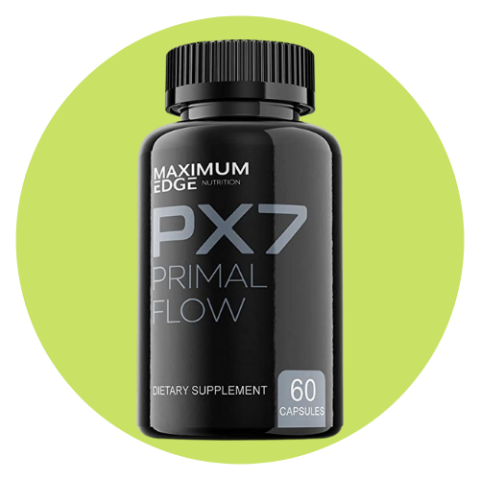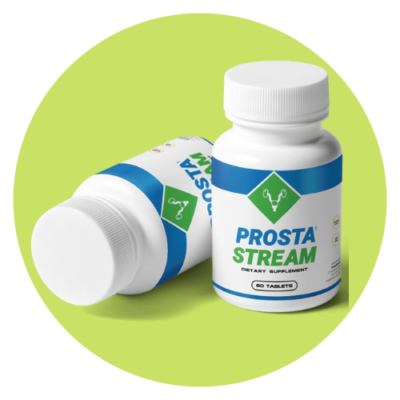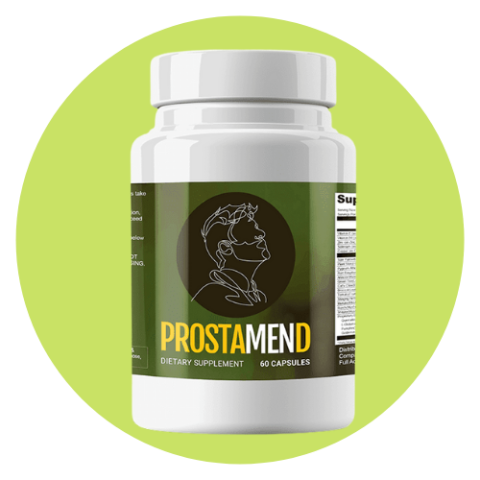3 Ways To Manage Prostate Pain: Complete Guide 2024
By Vanessa Richards
January 10, 2024 • Fact checked by Dumb Little Man
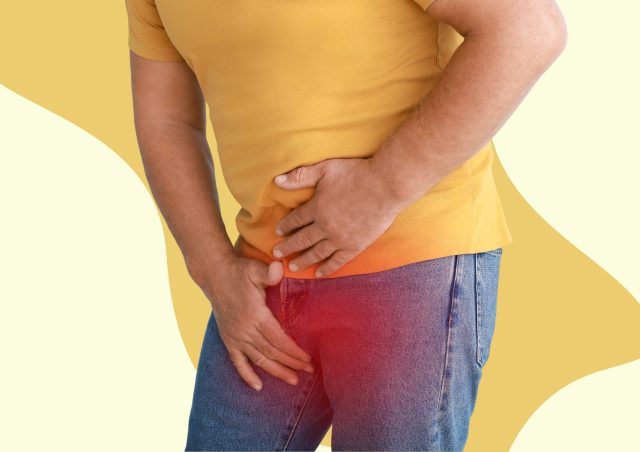
The prostate gland is an organ that a large fraction of men have to deal with at some point in their life. However, this gland is not the most well-understood organ by most people outside the medical field.
The prostate gland can be affected by several conditions which could lead to prostate pain. In this article, we’ll take a look at the causes, features, and treatments available for prostate pain.
Prostate Pain: What is a Prostate?
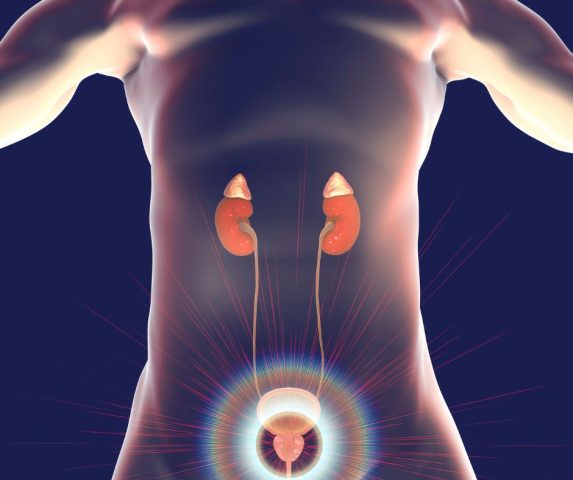
The prostate gland is a small organ found only in males and is located just beneath the bladder. The organ is a part of the male reproductive system and is said to be roughly the same shape and size as a walnut.
The main function of this organ is to produce prostatic fluid, which is an important component of semen and helps transport sperm cells from the testicles to the penis during ejaculation. However, that’s not the only reason the prostate is important.
The male urethra (the tube that carries urine) passes through this gland, which makes it very significant and also explains why prostate issues usually affect your ability to pass urine as well.
There is a range of conditions that can affect the prostate gland. These may cause the organ to enlarge, obstruct urine flow, and cause pain.
What Are the Causes of Prostate Pain?
Like any organ in the body, numerous medical conditions can affect your prostate gland. Many of these conditions can also lead to prostate pain, as well as other symptoms. However, we’ll take a look at the three most common causes of prostate pain: prostatitis, benign prostatic hyperplasia (BPH), and prostate cancer.
Prostatitis
Prostatitis is the most common cause of prostate pain and is a medical term used to describe an inflamed prostate gland. The condition can be quite painful.
Generally, there are four types of prostatitis: acute bacterial prostatitis, chronic bacterial prostatitis, chronic prostatitis (also known as chronic pelvic pain syndrome), and asymptomatic prostatitis.
Acute Bacterial Prostatitis
Acute bacterial prostatitis usually occurs when the gland becomes infected by certain strains of bacteria. Commonly this includes bacteria like E.coli, as well as STDs such as chlamydia and gonorrhea.
It is the most common urinary tract infection in men below the age of 50 and it is estimated that it occurs in up to 10% of men at some point in their lifetime. It usually comes with symptoms like prostate pain, fever, chills, painful urination, and so on.
If not treated properly acute bacterial prostatitis could lead to chronic bacterial prostatitis, prostate abscess, and even kidney diseases.
Chronic Bacterial Prostatitis
This is a lingering prostate infection, usually due to milder strains of bacteria. Chronic bacterial prostatitis is usually seen in older men after they have had an infection of the urinary tract or suffered from a bout of the acute form of bacterial prostatitis which may not have been properly treated.
The features of chronic bacterial prostatitis are similar to that of the acute form, but are generally milder and last longer. These symptoms may also wax and wane, making the diagnosis of this condition a bit tricky.
Chronic Prostatitis / Chronic Pelvic Pain Syndrome
This condition presents with symptoms that are very similar to acute prostatitis. The key difference is that when tests are done by your doctor no bacterial infection is found. The specific cause of this condition has not been identified but chronic prostatitis has been linked to various immune, digestive, and kidney diseases like irritable bowel syndrome (IBS), chronic fatigue syndrome, and so on.
Therefore, doctors have defined chronic prostatitis / chronic pelvic pain syndrome as pain that lasts for longer than 3 months in the penis, scrotum, the area between the rectum and scrotum (perineum), or lower abdomen.
Asymptomatic Inflammatory Prostatitis
This is a condition where there is inflammation of the prostate gland, but the individual has no symptoms. It is usually diagnosed through blood tests. This condition usually does not require treatment, but it may lead to certain complications such as infertility.
Benign Prostatic Hyperplasia
This is a relatively common medical condition that is usually seen in older men. It refers to a benign (not cancerous) enlargement of the prostate gland. Though the exact cause of the condition is not well understood, there are several well-known risk factors like old age, a family history of the condition, diabetes, obesity, and a lack of exercise.
An enlarged prostate gland may present with pain, but usually what occurs first are issues with urinating. This may include difficulty peeing, a weak urine flow, dribbling urine after peeing, and even urinary retention (being unable to pee).
Prostate Cancer
Prostate cancer is a relatively less common cause of pelvic pain but is one of the most common cancers in men. It can present in a wide range of ways including pain (especially in the lower back), difficulty urinating, weight loss, and so on.
Symptoms Associated With Prostate Conditions
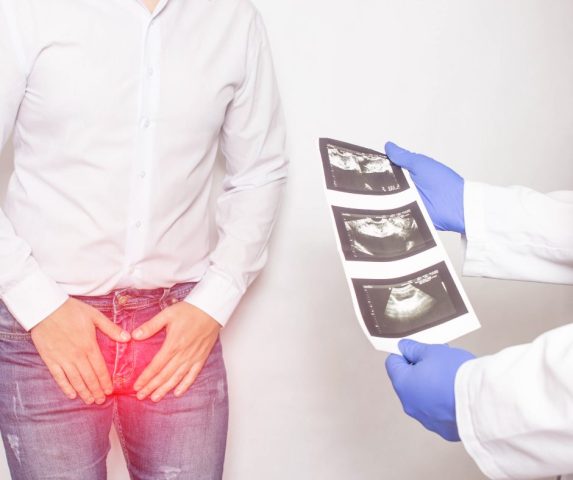
Let’s take a look at certain symptoms which are commonly associated with diseases of the prostate gland.
- Prostate pain is usually felt at the tip of the penis, scrotum, anus, within the pelvis, lower abdomen, or the region between the scrotum and anus (perineum). This pain may get worse while urinating or touching the perineum
- Urinary difficulties such as trouble initiating urination, a weak urine flow, dribbling urine for a long time after peeing, or the complete inability to pee (acute urinary retention).
- Cloudy urine
- Blood in the urine
- Fever
- Chills
- Nausea
- Vomiting
- Prostate cancer may also present with weight loss and several other symptoms.
If you suspect that you have any condition affecting your prostate, ensure you see a medical professional.
How Are Prostate Conditions Diagnosed?
There are several ways of diagnosing prostate conditions. They include:
- A digital rectal exam involves a doctor placing a gloved finger into your rectum to examine your prostate.
- Several blood tests, specifically to test the levels of a protein known as the prostate-specific antigen. Levels of this protein can help distinguish between prostatitis, BPH, and prostate cancer.
- A transrectal ultrasound involves placing an ultrasound probe into the rectum to visualize the prostate.
- Imaging studies like CT scans and MRIs.
How Is Prostate Pain Treated?

The treatment for prostate pain depends on the cause of the condition. Let’s take a look at some common treatments for prostate pain and some of its common causes.
1. Natural Remedies
These are some of the natural remedies which help deal with prostate pain.
- Heat therapy.
- A prostate massage may be helpful for some people.
- Avoid activities that put pressure on your prostate such as riding a bicycle and sitting on cushions to relieve the discomfort.
- Warm baths and showers have been said to be helpful as well.
- Reduce your consumption of things like spicy foods, processed foods, and caffeine.
- Stick to a healthy diet with high fiber content, healthy fats, vitamins, and minerals.
- Maintain a healthy weight and get adequate amounts of daily physical activity.
- Avoid drinking excessive amounts of alcohol, though moderate amounts are safe.
- Drink plenty of fluids and stay well hydrated.
- Reduce your stress levels, as this has been linked to worse symptoms
- Remember to always use protection during sexual activity and practice safe sex.
- There is some evidence that ejaculating at least once a week could help prevent prostatitis
- Acupuncture has been said to help with the pain of prostatitis, especially pain due to prostatitis chronic pelvic pain.
- Biofeedback has also been offered as a treatment option for individuals with discomfort due to prostatitis and chronic pelvic pain.
- Kegel exercises have also been advocated as they strengthen the pelvic floor muscles and help with the urinary symptoms which may accompany the various causes of pelvic pain.
2. Medications
Let’s take a look at some of the medications which are commonly used to treat prostate pain and its causes.
- Various painkillers like nonsteroidal anti-inflammatory drugs (NSAIDs) or opioids may be used to relieve the discomfort.
- Antibiotics may also be given in cases of acute and chronic bacterial prostatitis, though they may be less helpful in chronic prostatitis due to chronic pelvic pain syndrome.
- Alpha-blockers (such as terazosin, doxazosin, and tamsulosin) and phosphodiesterase-5 (PDE-5) inhibitors (like sildenafil, tadalafil, and vardenafil) help relax the muscles of the prostate and bladder. These drugs are used to improve the urinary symptoms of BPH and are not used for prostatitis or prostate cancer.
- 5-alpha reductase inhibitors such as finasteride and dutasteride help reduce testosterone levels, which may also reduce the symptoms of BPH.
- Chemotherapy can be used to treat prostate cancer.
- Various surgical treatments are available for treating BPH and prostate cancer.
3. Supplements
Some supplements are great for prostate health and have been linked to a reduction of prostatitis pain. This may be because many of these may help reduce inflammation.
5 Best Prostate Supplements
| Product | Key Feature |
|---|---|
| Top Consumer's Choice | |
| Packed with Natural Ingredients | |
| Best Overall Prostate Health Supplement | |
| Best Anti-Inflammatory Properties | |
| Best Prostate Health Capsules |
1. Top Consumer's Choice for Better Bladder Health: Fluxactive
Fluxactive is a 100% blend of 14 natural herbs and extracts which have several beneficial effects, especially in promoting prostate health. It’s also great for men’s sexual performance and helps boost bladder health. The ingredients found within Fluxactive include Chinese Ginseng, Cayenne, Inosine, Saw Palmetto, Damiana, Ginkgo biloba, Oat straw, Muira Puama, Epimedium Sagittarium, Tribulus, Hawthorn, Catuaba, and vitamin E.
Shop Fluxactive Complete at the Official Website.
Full Article: Fluxactive Complete Reviews 2024: Does it Really Work?
2. Packed with Natural Ingredients: Vital Flow
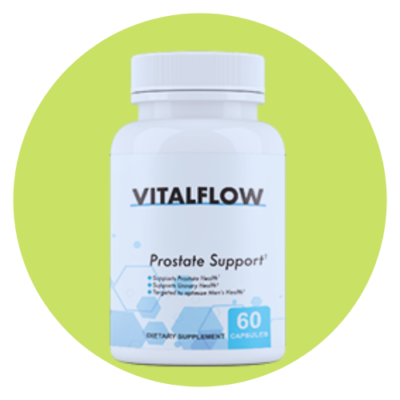
Vital Flow is a supplement that improves prostate health and may even improve the urinary symptoms associated with prostate disease. Some of the ingredients within the formulation include a Japanese Mushroom blend crafted from Shiitake, Reisi, Maitake, Graviola Leaf, Saw Palmetto Berries, vitamin E, vitamin B6, zinc, and copper.
Shop at Vital Flow's Official Website.
Full Article: VitalFlow Reviews: Does it Really Work?
3. Best Overall Prostate Health Supplement: Primal Flow
Primal Flow is a great prostate health supplement from the Maximum Edge brand. The product has anti-inflammatory properties and also works by attacking DHT, an androgen that is known to be one of the causes of an abnormally enlarged prostate gland. Some of the ingredients of this supplement include Stinging Nettle, a Japanese Mushroom blend, Cat’s Claw, and Saw Palmetto Extract, even Green Tea extract.
Shop at Primal Flow's Official Website.
4. Best Anti-Inflammatory Properties: ProstaStream
The Prostastream supplement is also great for the kidney and urinary tract too. It contains 32 natural ingredients which have important prostate health-boosting effects such as Plant Sterols, Saw Palmetto Extract, Nettle Root Extract, Pumpkin Seed, and much more.
Shop at ProstaStream's Official Website.
Full Article: ProstaStream Reviews: Does it Really Work?
5. Best Prostate Health Capsules: ProstaMend
ProstaMend is a prostate supplement that is protective against various prostate conditions. These conditions include benign prostatic hyperplasia and prostate cancer. It does this by antagonizing the effects of DHT. The active ingredients in this formulation are Beta-Sitosterol and Green Tea.
Shop at ProstaMend's Official Website.
Editor's Pick: Fluxactive
Fluxactive is a top prostate health supplement that is made from an amazing blend of 14 powerful herbs extracts and vitamins. Each of these ingredients has prostate health-promoting properties and when combined gives a formulation that not only supports prostate health but bladder function and male sexual performance.
As we said, the product is 100% natural, GMO-free, FDA-approved, gluten-free, and vegan-friendly. This means that not only is the product effective, but it’s also safe for virtually everyone.
Fluxactive works through several mechanisms.
First, it works against adaptogens. These are a class of biomolecules that are strongly believed to be one of the key factors responsible for prostate enlargement. It also optimized blood flow to the prostate gland, boosting its health and helping it clear out inflammation by providing nutrients and antioxidants.
There is also evidence that some of the ingredients within the blend promote sexual performance, delay certain effects of aging such as muscle and hair, prevent wrinkling, as well as promote bladder health.
>> Related Article: 7 Best Prostate Supplements • Top Supplement for Prostate Health in 2024
Conclusion
Prostate pain is a common feature seen in many conditions which affect the prostate gland. It can be quite distressing and is usually associated with urinary symptoms as well.
However, there is a range of treatment options available for dealing with prostate pain and its causes. These include natural remedies, medications, surgery, and supplements.
Certain herbs have been found to have powerful prostate health-boosting effects. An amazing supplement that makes use of a powerful blend of these herbs is the Fluxactive Complete Supplement.
Fluxactive is a top prostate health supplement that is made from a blend of 14 powerful herbs extracts and vitamins. It is 100% natural, GMO-free, vegan-friendly, and gluten-free too.
Click Here to Get Fluxactive Complete at Discounted Price.
Related Article: How to Improve your Prostate Health: Complete Guide 2024
Prostate Pain FAQs
Where is prostate pain commonly felt?
Prostate pain is usually felt at the tip of the penis, scrotum, anus, within the pelvis, lower abdomen, or the region between the scrotum and anus (perineum).
Does BPH lead to prostate cancer?
Current studies show that BPH does not lead to prostate cancer. However, it can cause other serious complications such as urinary retention and kidney issues.
How is the cause of prostate pain diagnosed?
The cause of prostate pain can be diagnosed through a digital rectal exam, testing for the level of prostate specific antigen in the blood, a transrectal ultrasound, as well as several other tests.
Vanessa Richards
Vanessa is a mom of 3 lovely children and a software geek. Outside of her career as a health and wellness instructor. She enjoys writing and researching on topics such as finance, software, health and culinary.


